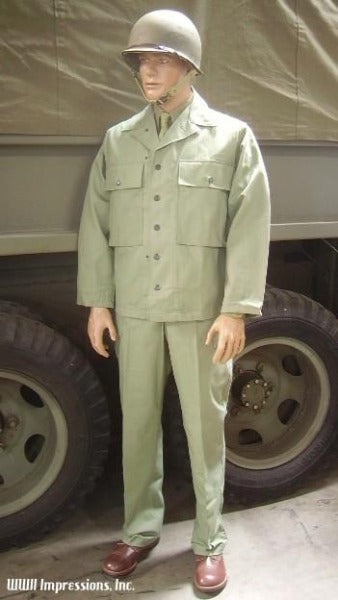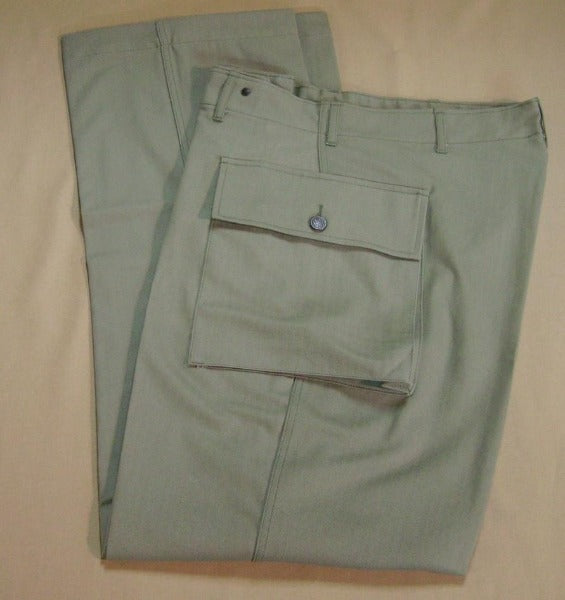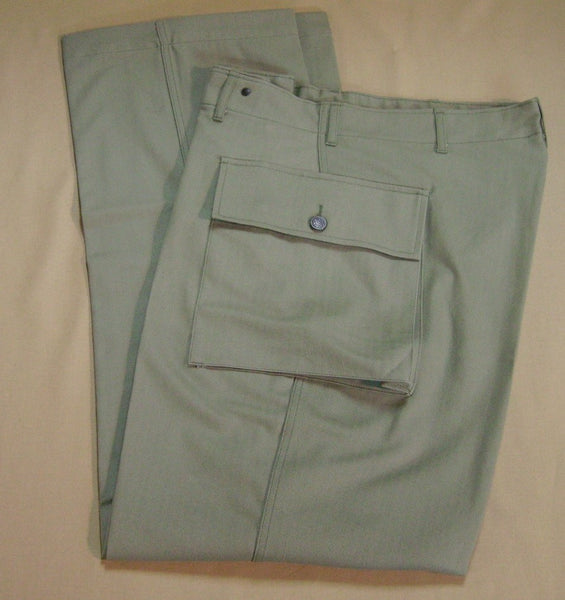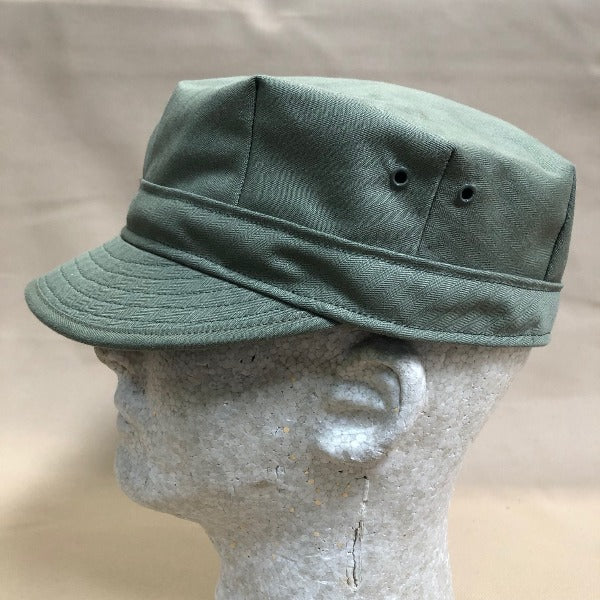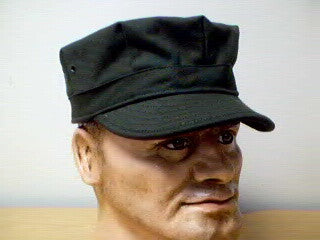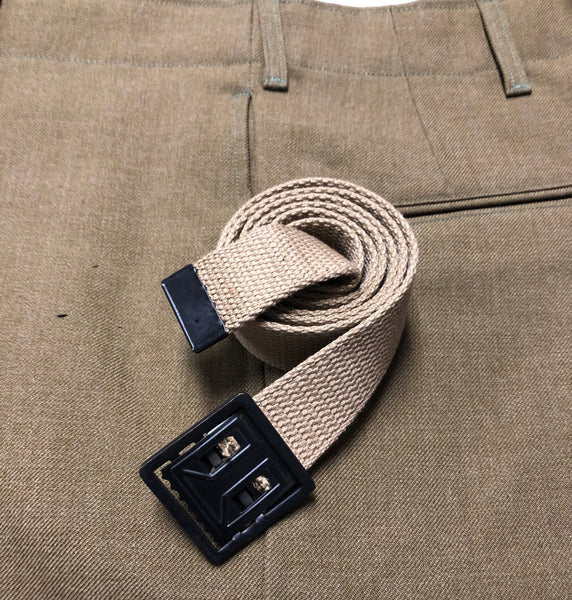Uniform, Herringbone Twill, M1942

The Army decided that the M1941 HBT uniform was not practical enough as a utilitarian garment. The early uniform lacked any real storage capacity for the person. The Army quickly adopted a new vision for the fatigue uniform design which would eventually span for over a decade. The M1942 fatigue uniform was developed for a much better ease of wearing concept as well as having very large volume cargo pockets on both the jacket and trousers. The M1942 uniform continued as a sturdy shell garment to cover the regulation woolen OD or cotton khaki uniform during work details or field training. It would also be worn into into battle during the mid WWII and later campaigns of the pacific war. The HBT or Herringbone weave pattern was introduced as the first ever "rip stop" type of fabric. It was robust, held up and performed well under use and distressed conditions, and was comfortable for the wearer. It consisted of a button front cargo pocketed jacket, cargo pocketed trousers, and a frontal visored cap. The cap was only protective of the wearers face. The earlier daisy mae was not practical for wearing under a helmet but this HBT cap was. Hat is ventilated with eyelets on both sides. This uniform was initially produced in the same sage shade of OD #5 as pictured hereon. It is also produced in a darker version of OD #7.
This uniform saw service in all theaters of operation in WWII, with most notably in the Pacific and in the European theaters. From Luzon to the Beaches of Normandy the cotton HBT was very practical and comfortable. The uniform also saw service during the Normandy campaign as a Gas protecting garment soaked in the noxious CC2 Anti-Gas impregnate.
Accurate HBT fabric does not exist on the commercial textile market so we contracted with a domestic fabric mill to produce our authentic HBT fabric. It is durable and hefty and wears hard just like the originals. We dyed the fabric in the authentic sage shade of Olive Drab #5, otherwise known to collectors as "light shade" and Dark Shade OD #7. The dyes used in dyeing the fabric are mil-spec so they are very colorfast and won't fade easily. The buttons are restrikes of the WWII era Burst of Glory 13-star metal buttons with metal tacks to affix them. Construction of the garment is accomplished with mercerized and glazed 100% cotton thread matched for gauge and dyed in the appropriate shade of OD authentic to the uniform.
In lieu of our regular HBT fabric we also produced a very limited run of HBT fatigues in what we call "Cast Iron" shade. A photo representation of the Cast Iron shade is shown below under fatigue caps. The difference between the Cast Iron and our regular run fatigues is that the fabric feels heavier due to a heavy pigment used in the dyeing of the fabric. This heavy pigment gives the fabric is slightly heathered appearance which is the reason for the "Cast Iron" title. The finish is just as robust, durable in the wash, and resistant to the sun. These are durable just like cast-iron! These reduced priced to sell!
Be advised the fabric used in these garments has a residual shrinkage of about 1" in the waist and chest. Shrinkage should be considered when sizing. Please note we are nearly sold out of light shade HBT fatigues but reservations are being taken for .
